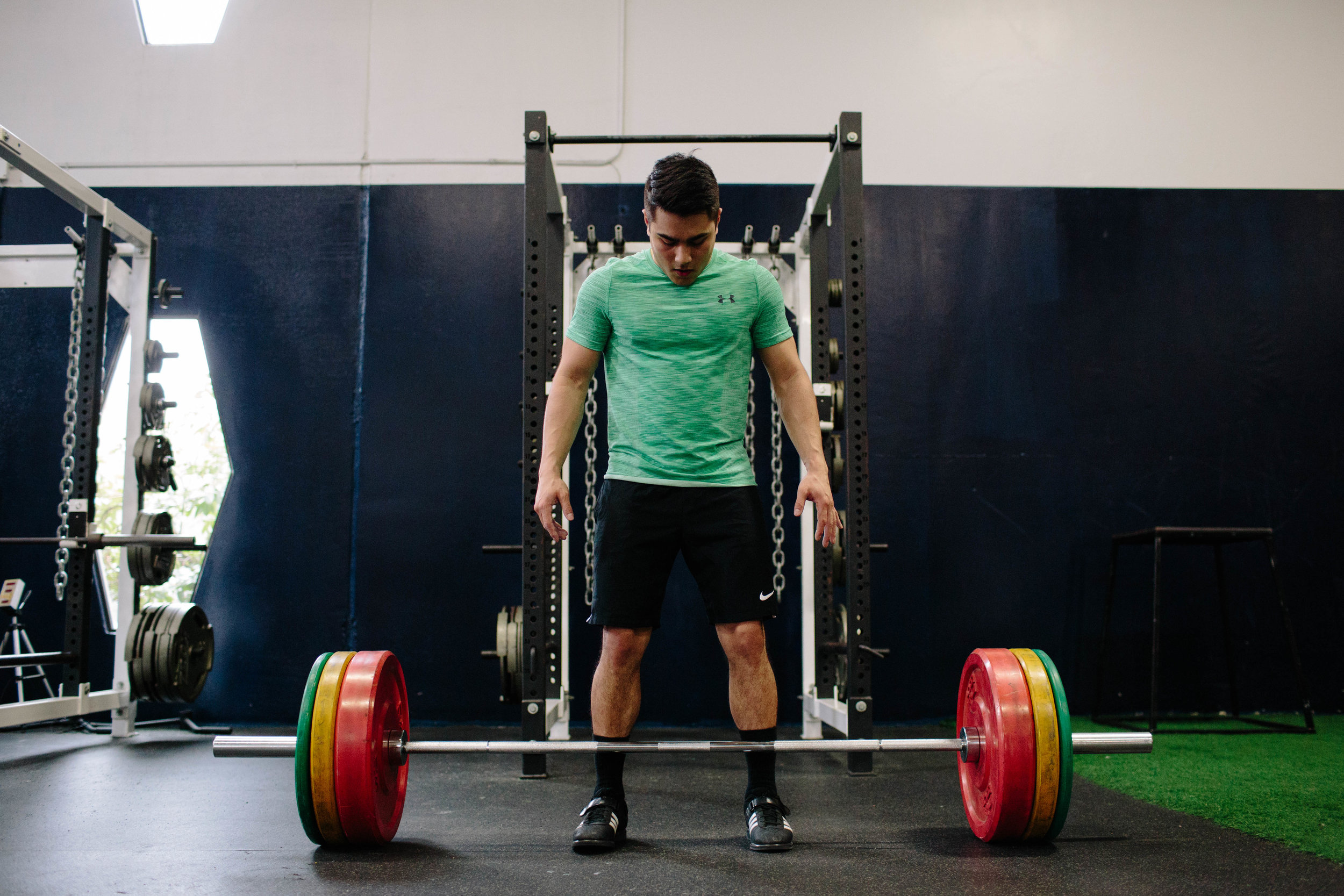Tools of the Trade: The Barbell
/In this "Tools of the Trade" series, I will highlight important pieces of weight room equipment and how to implement them in a successful training program. The first "tool of the trade" is arguably the single most important tool you can have in your weight room: the barbell.
Any serious strength and conditioning facility will be outfitted with a surplus of good Olympic bars. Some gyms have different bars for men and women (of different weights, lengths, and thicknesses) but the standard 45-lb bar is suitable to for both men's and women's programming. Barbells set the foundation for any program that focuses on developing speed, strength, and power and provide 3 compelling reasons for stocking them in your weight room.
1. Axial Loading
The human skeleton is divided into two major regions: axial, referring to the bones at the center of the body (skull, vertebral column, ribcage, and sternum), and appendicular, referring to the limbs and girdles. @@The barbell is particularly useful in axial loading for structural movement. In other words, if the training goal is to "stress" the spinal column (in order to create training adaptation), the barbell will provide the best mode of resistance to achieve that purpose.@@
When the bar is fixed behind the neck, as in a squatting or lunging movement, the musculature surrounding the torso and hips has to work to maintain an upright posture to complete the movement. This trains the athlete to produce force in the most efficient patterns, so they can maintain strong structural positions when delivering forceful actions in practice or competition (striking, jumping, sprinting, etc.). Similarly, the spinal column is loaded when the bar is locked in the overhead position, only now the shoulders are recruited as well to control the weight overhead. While dumbbells can be used to complete similar movements, using a bar allows for loading more weight, thus yielding greater results and quicker adaptation.
2. Time and Space Efficiency
Barbells are efficient because they are very easy to scale when it comes to loading. Adding and removing plates is fast, and allows a range from 45 lb to as much weight as you could possibly need. Not only does this make it convenient for multiple athletes to use the same bar, it saves time and space—which are both at a premium during team training sessions. Training with barbells allows for less clutter in the weight room and a more organized approach to team training. In addition, there are a wide variety of barbell movements that can be effective through every phase of training.
3. Accommodates All Skill Levels
A barbell will be a constant training tool for beginners all the way to Olympic-caliber athletes. In Volt training programs, we frequently program high-rep compound movements using light or empty barbells in early blocks of training. This helps train the neuromuscular system to develop optimum patterns of movement and highlight/correct poor mechanics. Practicing the movements early allows for an easier transfer to loaded movements later in the program. This helps make barbells a mainstay in strength and conditioning and a must-have piece of equipment for any weight room.
The Takeaway
Their efficiency, scalability, and effectiveness at creating training adaptations makes the barbell an essential tool for athletes training to improve sport performance. A properly designed strength and conditioning program, built by a certified strength coach, will appropriately progress athletes into loaded barbell movements at a safe rate. If you're just starting out with barbell work, prioritize quality of movement before adding load. And be sure to check out other articles from our popular Tools of the Trade series: The Glute-Ham Developer (GHD), Pull-ups, Hill Sprints, and Weight Belts.
Join over 100,000 coaches and athletes using Volt's intelligent training app. For more information, click here.










